Potřebujeme váš souhlas k využití jednotlivých dat, aby se vám mimo jiné mohly ukazovat informace týkající se vašich zájmů. Souhlas udělíte kliknutím na tlačítko „OK“.
ASTM D7596-14
Standard Test Method for Automatic Particle Counting and Particle Shape Classification of Oils Using a Direct Imaging Integrated Tester
Automaticky přeložený název:
Standardní zkušební metoda pro automatické počítání částic a tvar klasifikace olejů s použitím integrovaného Tester Direct Imaging
NORMA vydána dne 1.6.2014
Informace o normě:
Označení normy: ASTM D7596-14
Poznámka: NEPLATNÁ
Datum vydání normy: 1.6.2014
Kód zboží: NS-38793
Počet stran: 7
Přibližná hmotnost: 21 g (0.05 liber)
Země: Americká technická norma
Kategorie: Technické normy ASTM
Kategorie - podobné normy:
Maziva, průmyslové oleje a odpovídající výrobky
Hydraulické tekutiny
Anotace textu normy ASTM D7596-14 :
Keywords:
condition monitoring, contaminant particles, contamination, direct imaging integrated tester, ISO codes, particle count, soot, wear, wear particles, ICS Number Code 75.100 (Lubricants, industrial oils and related products),75.120 (Hydraulic fluids)
Doplňující informace
| Significance and Use | ||||||||||||||||||||||||||||||
|
5.1 This test method is intended for use in analytical laboratories including on-site in-service oil analysis laboratories. Periodic sampling and analysis of lubricants have long been used as a means to determine overall machinery health. Atomic emission spectroscopy (AES) is often employed for wear metal analysis (Test Methods D5185 and D6595). A number of physical property tests complement wear metal analysis and are used to provide information on lubricant condition (Test Methods D445, D2896, D6304, and D7279). Molecular spectroscopy (Practice E2412) provides direct information on molecular species of interest including additives, lubricant degradation products and contaminating fluids such as water, fuel and glycol. Direct imaging integrated testers provide complementary information on particle count, particle size, particle type, and soot content. 5.2 Particles in lubricating and hydraulic oils are detrimental because they increase wear, clog filters and accelerate oil degradation. 5.3 Particle count may aid in assessing the capability of a filtration system to clean the fluid, determine if off-line recirculating filtration is needed to clean the fluid, or aid in the decision whether or not to change the fluid. 5.4 An increase in the concentration and size of wear particles is indicative of incipient failure or component change out. Predictive maintenance by oil analysis monitors the concentration and size of wear particles on a periodic basis to predict failure. 5.5 High soot levels in diesel engine lubricating oil may indicate abnormal engine operation. |
||||||||||||||||||||||||||||||
| 1. Scope | ||||||||||||||||||||||||||||||
|
1.1 This test method covers the determination of particle concentration, particle size distribution, particle shape, and soot content for new and in-service oils used for lubrication and hydraulic systems by a direct imaging integrated tester. 1.1.1 The test method is applicable to petroleum and synthetic based fluids. Samples from 2 to 150 mm2/s at 40°C may be processed directly. Samples of greater viscosity may be processed after solvent dilution. 1.1.2 Particles measured are in the range from 4 μm to ≥ 70 μm with the upper limit dependent upon passing through a 100 μm mesh inlet screen. 1.1.3 Particle concentration measured may be as high as 5 000 000 particles per mL without significant coincidence error. 1.1.4 Particle shape is determined for particles greater than approximately 20 µm in length. Particles are categorized into the following categories: sliding, cutting, fatigue, nonmetallic, fibers, water droplets, and air bubbles. 1.1.5 Soot is determined up to approximately 1.5 % by weight. 1.1.6 This test method uses objects of known linear dimension for calibration. 1.2 The values stated in SI units are to be regarded as standard. No other units of measurement are included in this standard. 1.3 This standard does not purport to address all of the safety concerns, if any, associated with its use. It is the responsibility of the user of this standard to establish appropriate safety and health practices and determine the applicability of regulatory limitations prior to use. |
||||||||||||||||||||||||||||||
| 2. Referenced Documents | ||||||||||||||||||||||||||||||
|
Podobné normy:
Historická
1.5.2014
Historická
1.5.2011
Historická
1.5.2014
Historická
15.5.2013
Historická
1.5.2014
Historická
1.5.2013
Doporučujeme:
EviZak - všechny zákony včetně jejich evidence na jednom místě
Poskytování aktuálních informací o legislativních předpisech vyhlášených ve Sbírce zákonů od roku 1945.
Aktualizace 2x v měsíci !
Chcete vědět více informací? Podívejte se na tuto stránku.


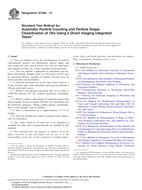
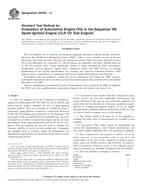 ASTM D6709-14
ASTM D6709-14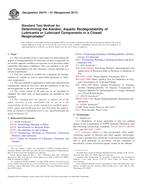 ASTM D6731-01(2011)..
ASTM D6731-01(2011)..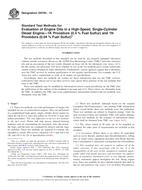 ASTM D6750-14
ASTM D6750-14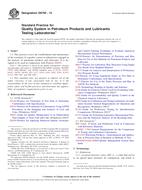 ASTM D6792-13
ASTM D6792-13 ASTM D6794-14
ASTM D6794-14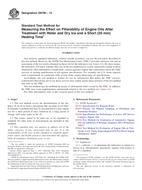 ASTM D6795-13
ASTM D6795-13
 Cookies
Cookies
